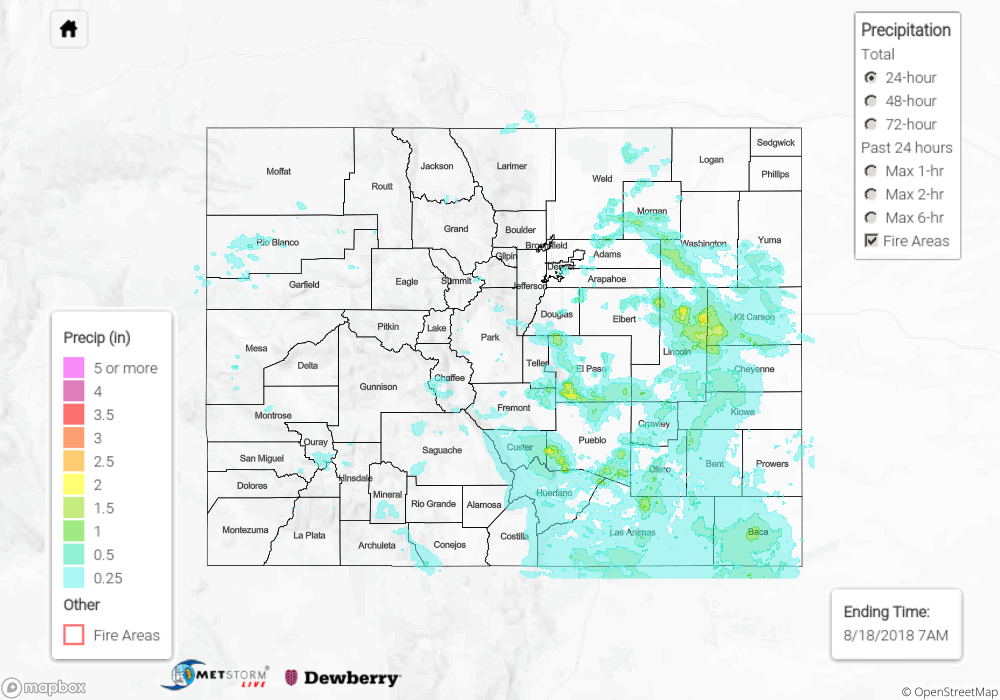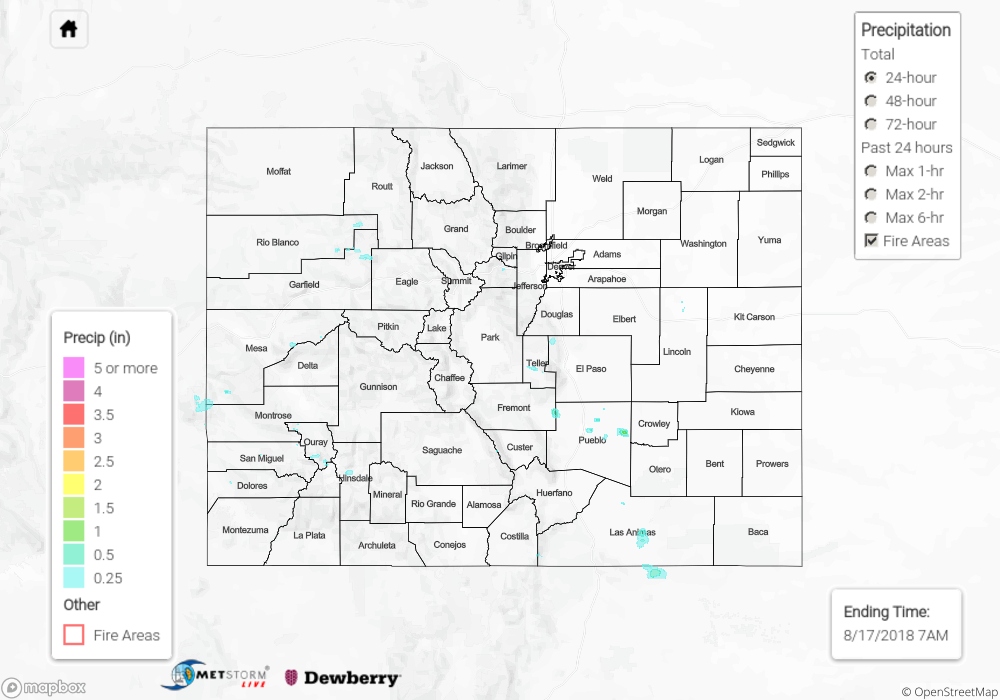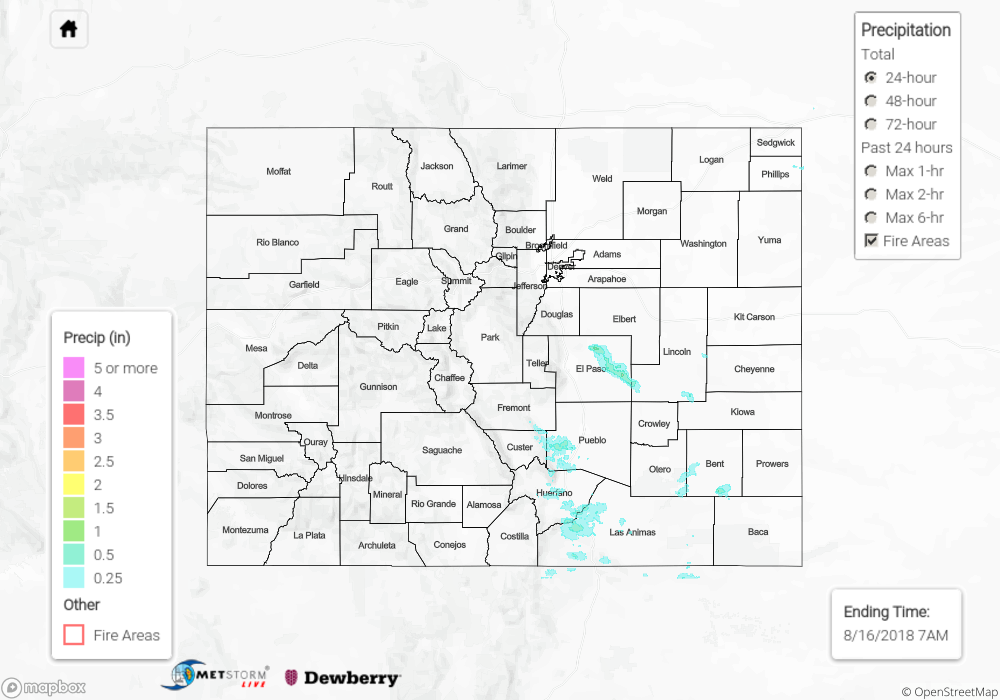Issue Date: Sunday, August 19th, 2018
Issue Time: 9:30 AM MDT
Summary:
An upper-level low tracked across Wyoming yesterday, acting as the trigger mechanism for showers/thunderstorms across Colorado. The initial round of storms got an early start during the morning hours over the High Country, eventually impacting the Urban Corridor by 11:30 AM and the plains shortly thereafter. A few of these storms were strong, producing hail, strong winds, and periods of heavy rainfall (mainly east of I-25). As the first group of storms tracked east, another developed during the late evening/nighttime hours in response to a secondary disturbance, producing strong winds, small hail, periods of moderate-to-heavy rainfall, and plenty of lightning. Those that stayed for the entire Broncos preseason game likely experienced these storms on their way home from the game, and those at home that were already asleep may have been awakened by loud claps of thunder.
All in all, the good news of the day is that no flash flooding was reported, and the rain that fell can be categorized as beneficial. For a look at precipitation estimates in your area, please see the State Precipitation Map below.
Click Here For Map Overview
The map below shows radar-estimated, rainfall gage-adjusted Quantitative Precipitation Estimates (QPE) across Colorado. The map is updated daily during the operational season (May 1 – Sep 30) by 11AM. The following six layers are currently available: 24-hour, 48-hour and 72-hour total precipitation, as well as maximum 1-hour, 2-hour and 6-hour precipitation over the past 24 hour period (to estimate where flash flooding may have occurred). The 24-hour, 48-hour and 72-hour total precipitation contain bias corrections that are not disaggregated into the hourly estimates, so there will likely be some differences. The accumulation ending time is 7AM of the date shown in the bottom right corner. Also shown optionally are fire burn areas (post 2012), which are updated throughout the season to include new burn areas. The home button in the top left corner resets the map to the original zoom.



